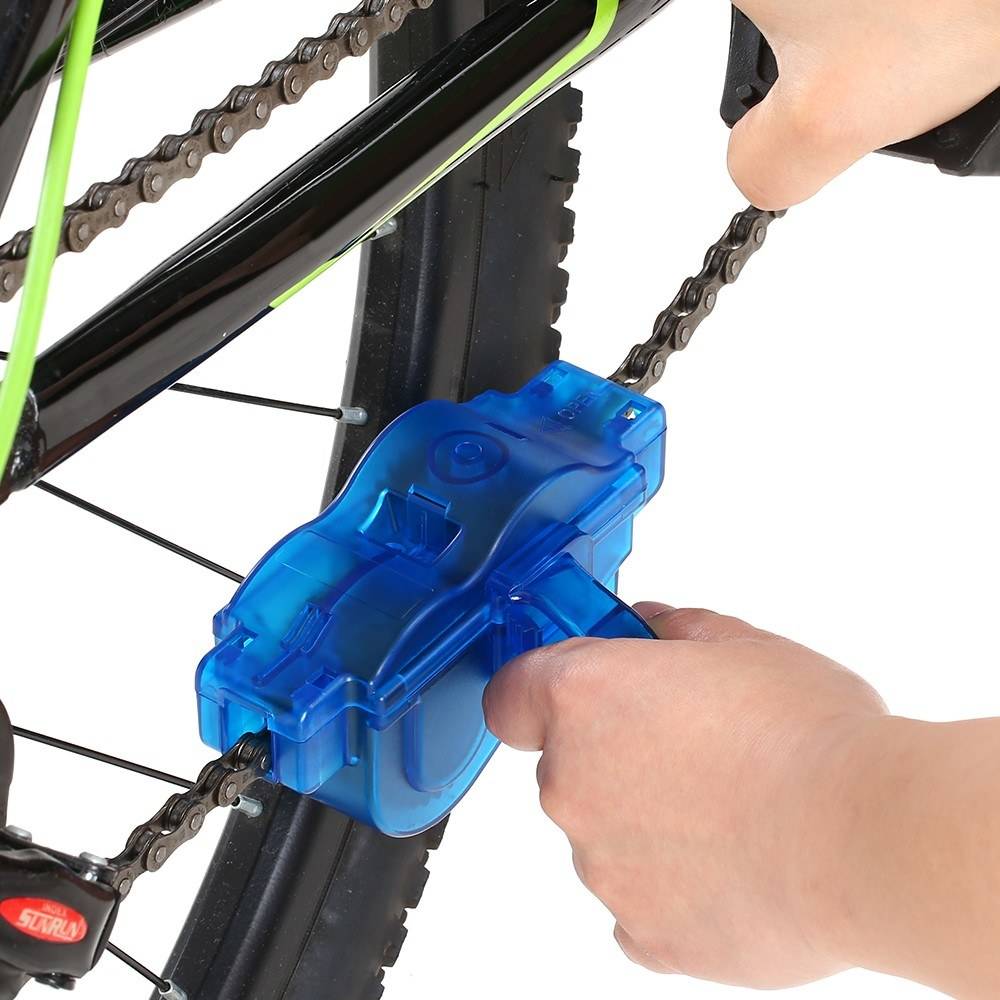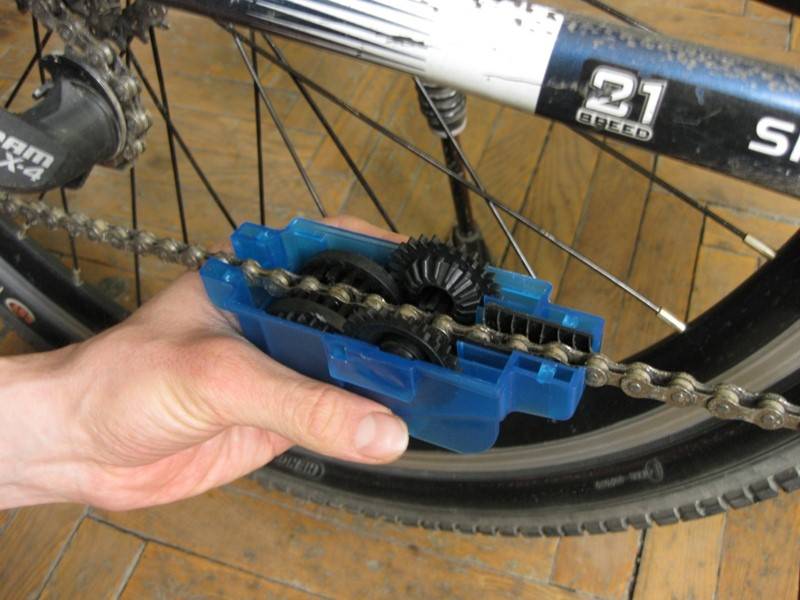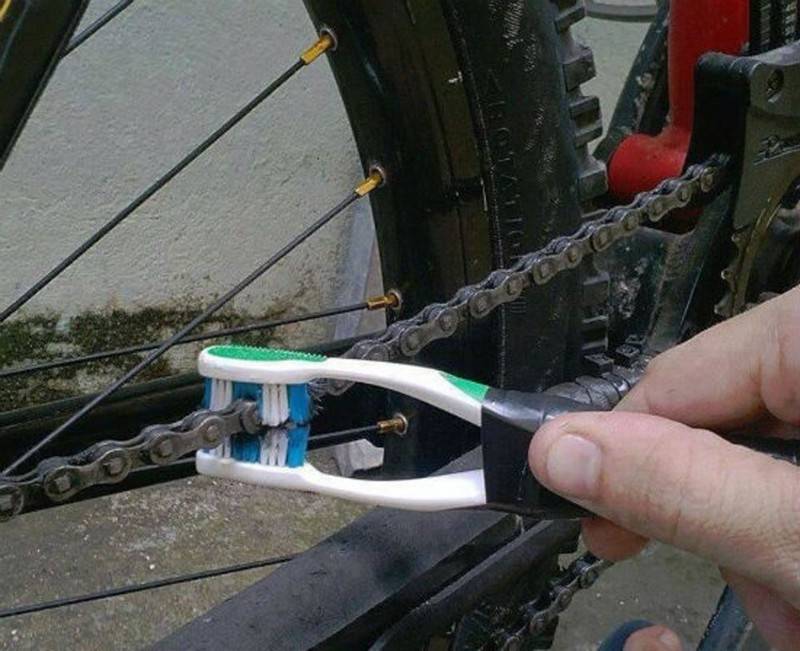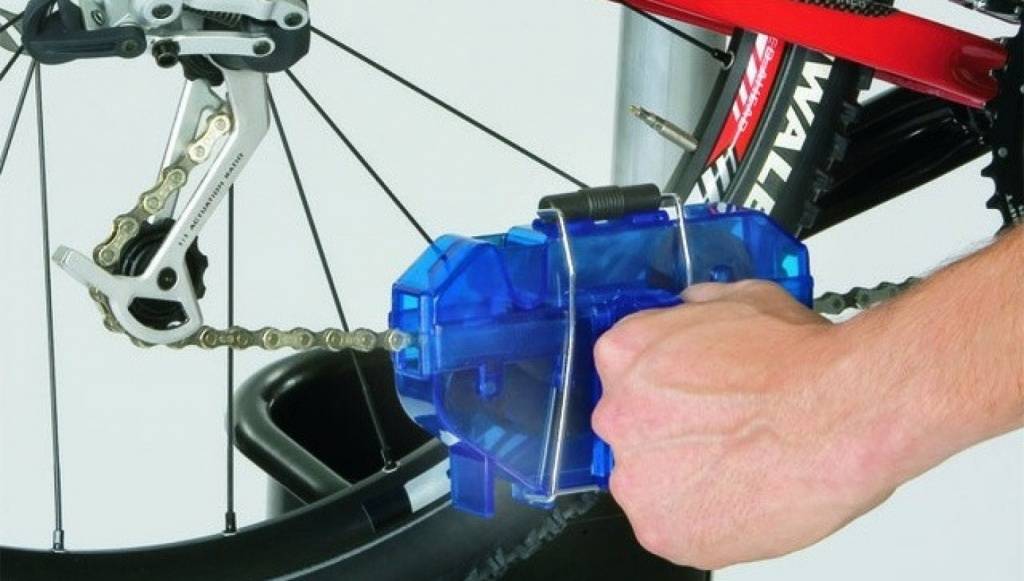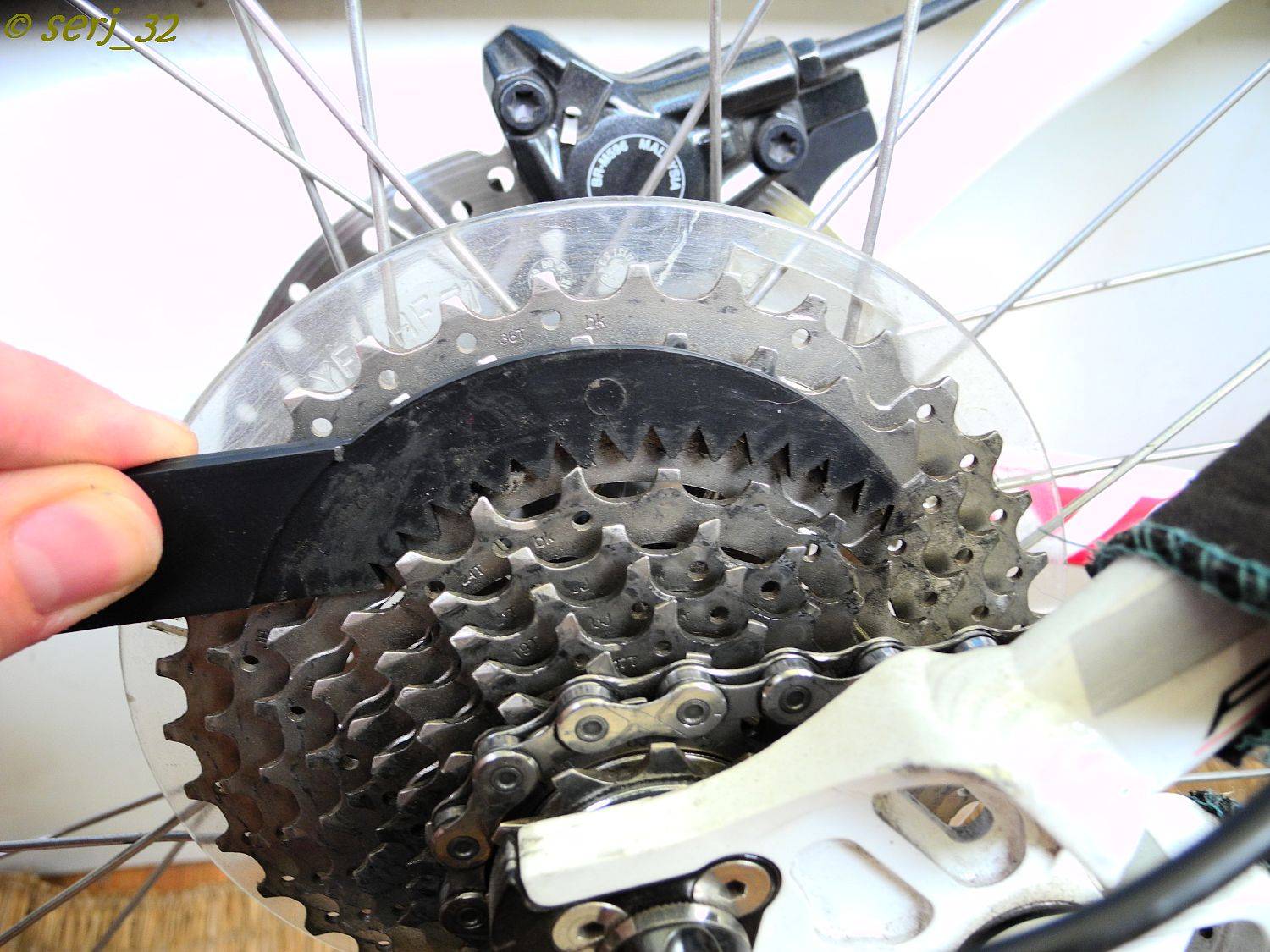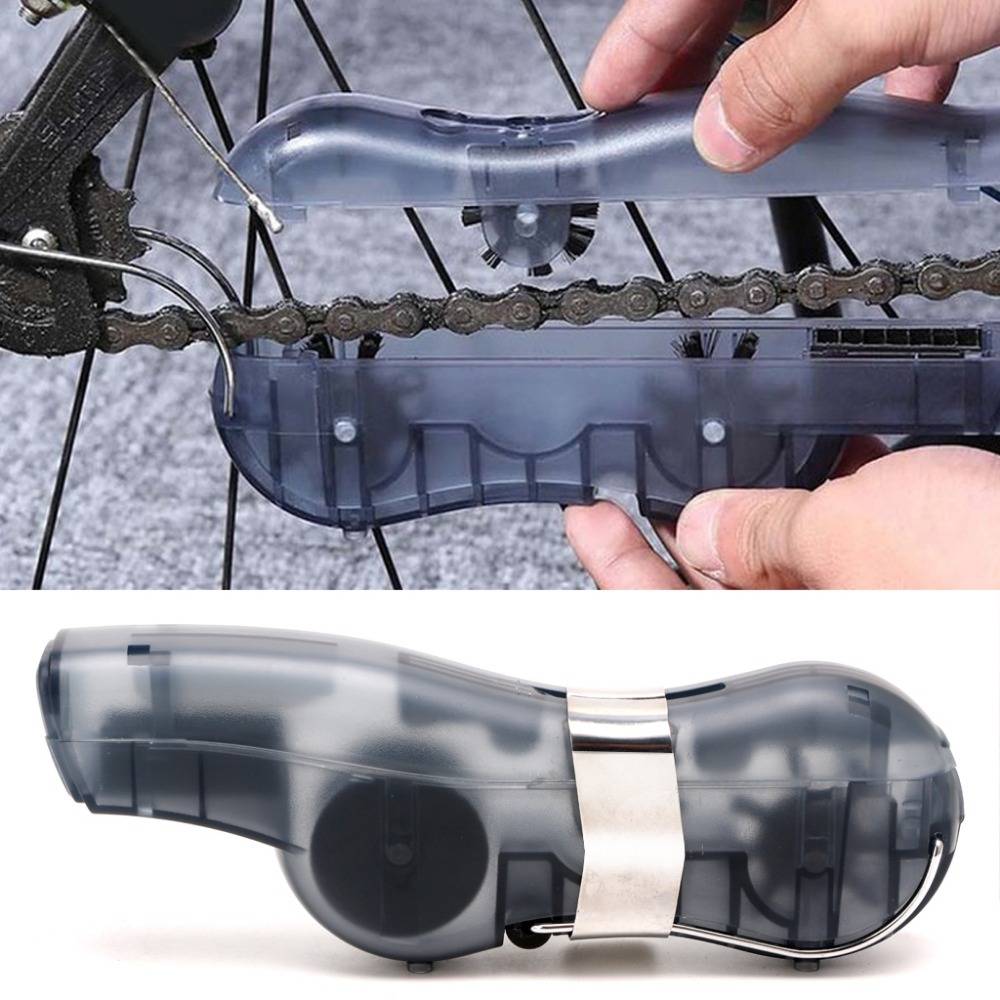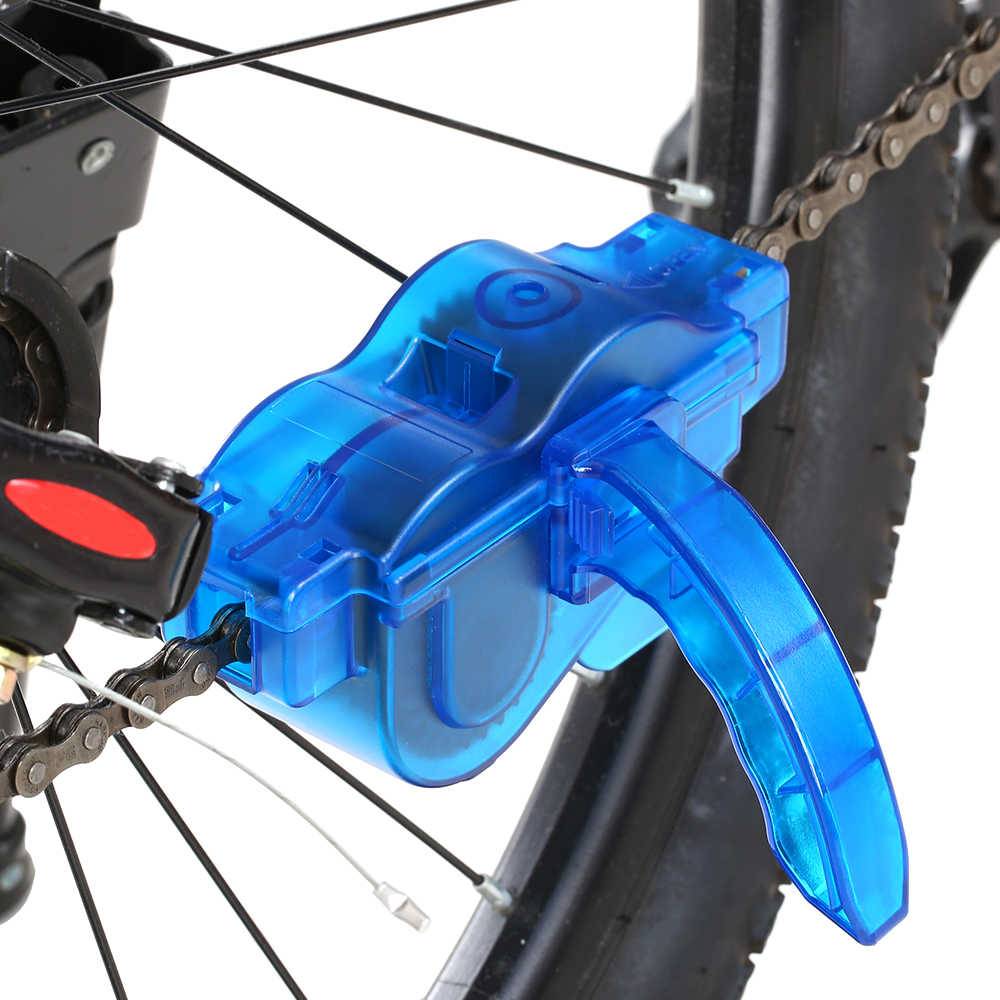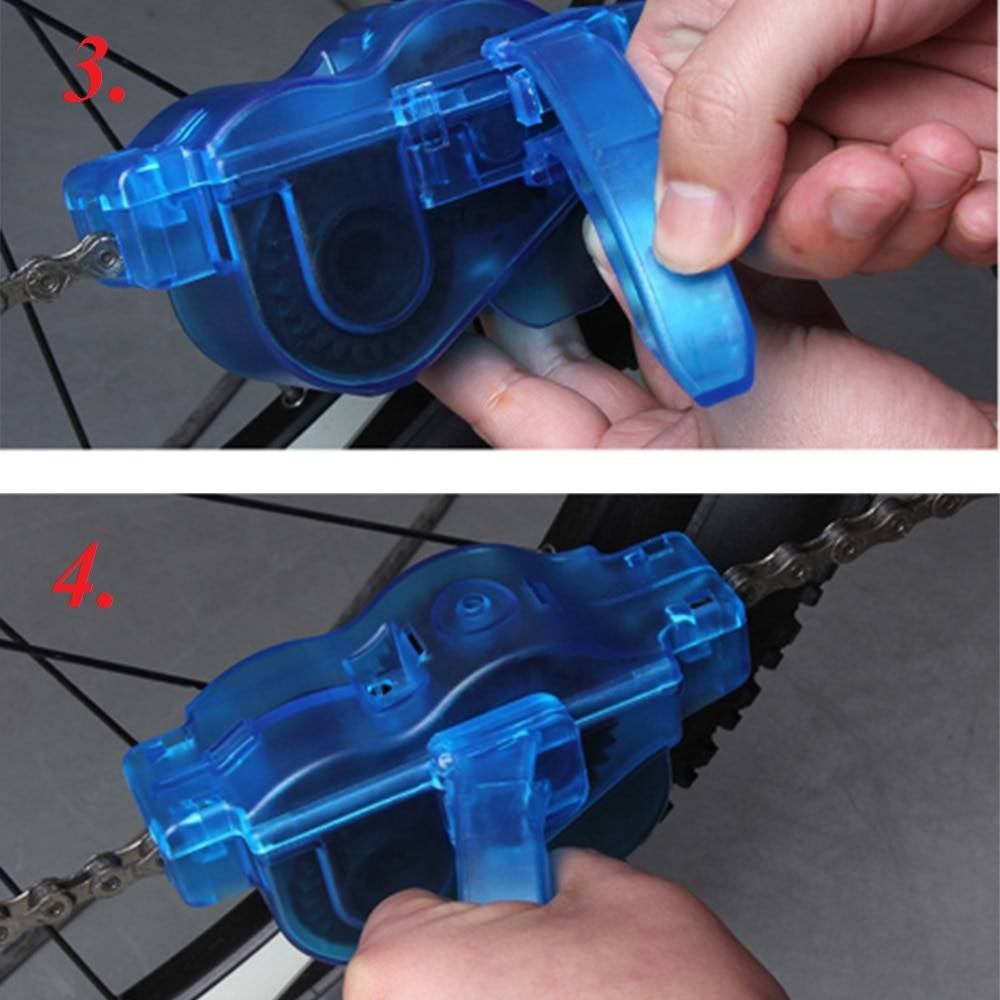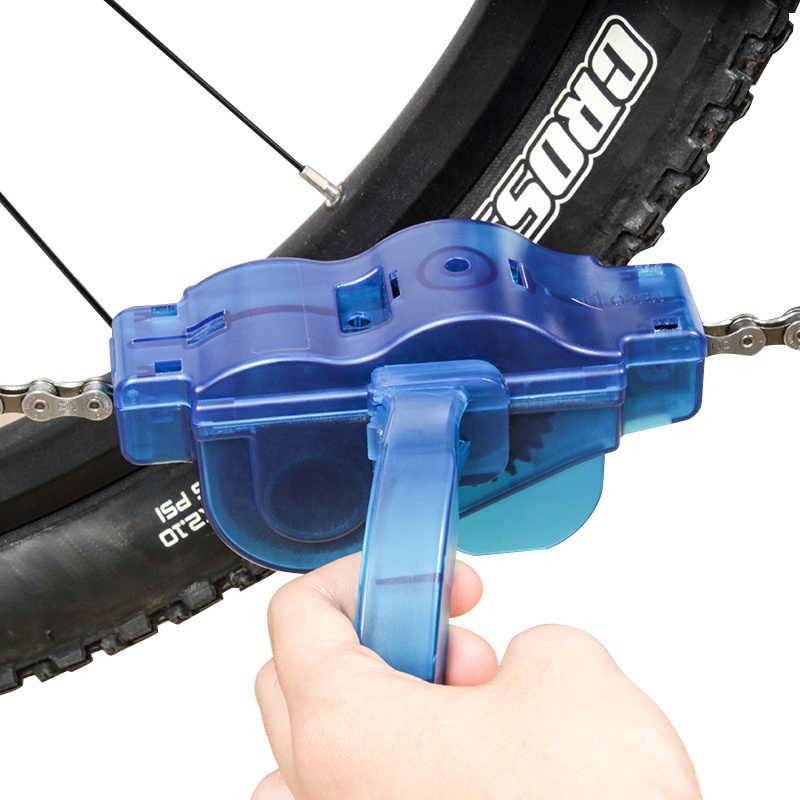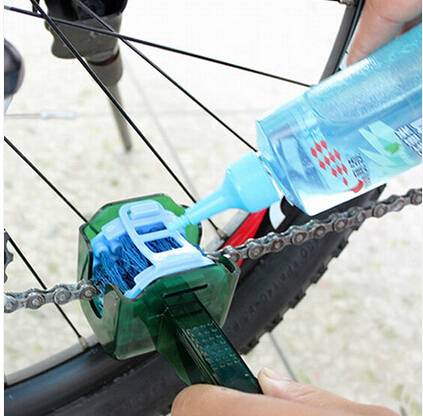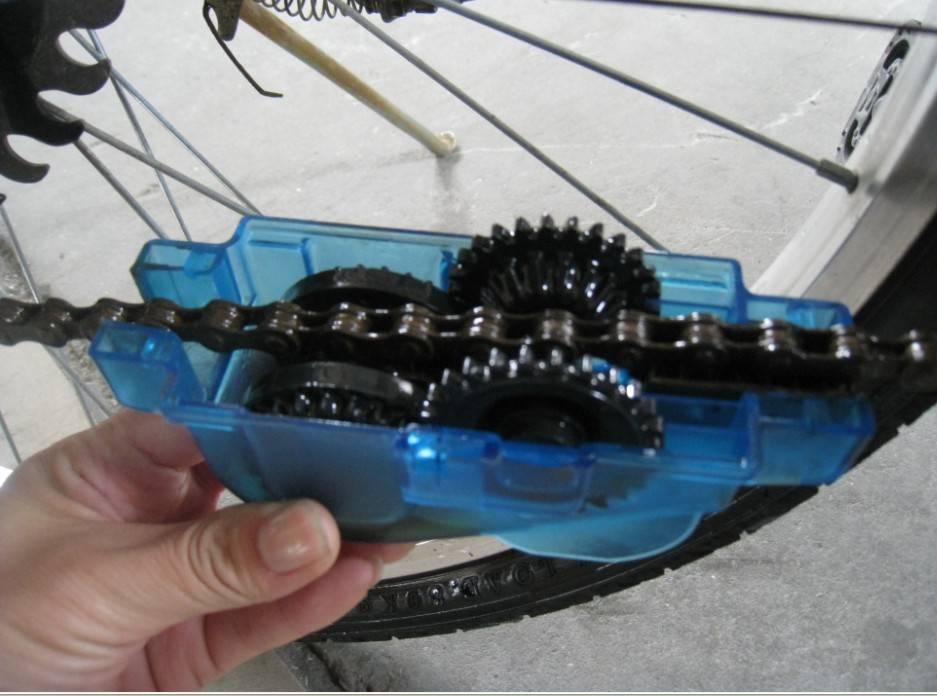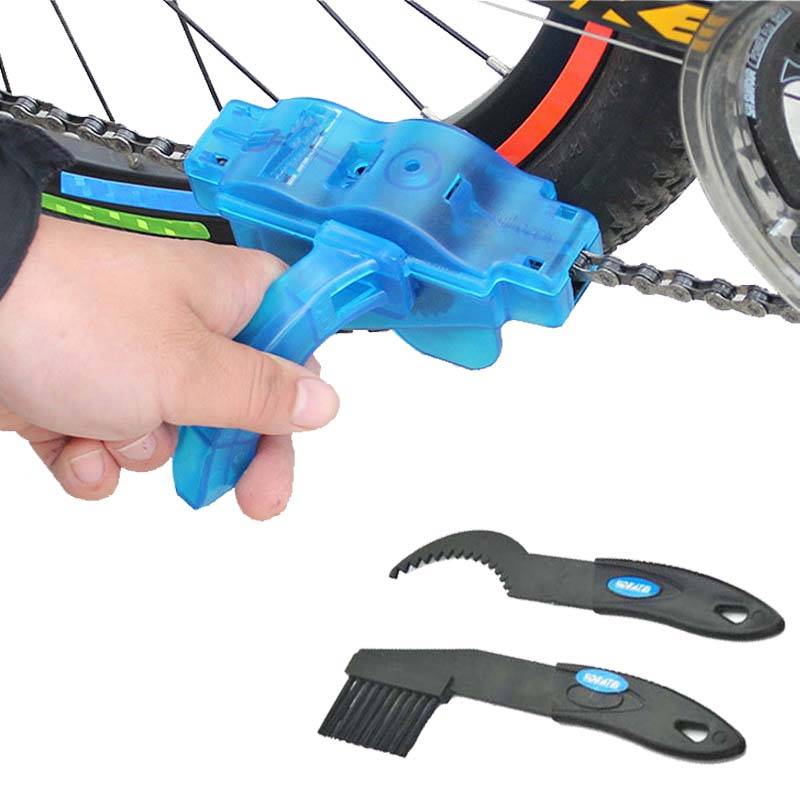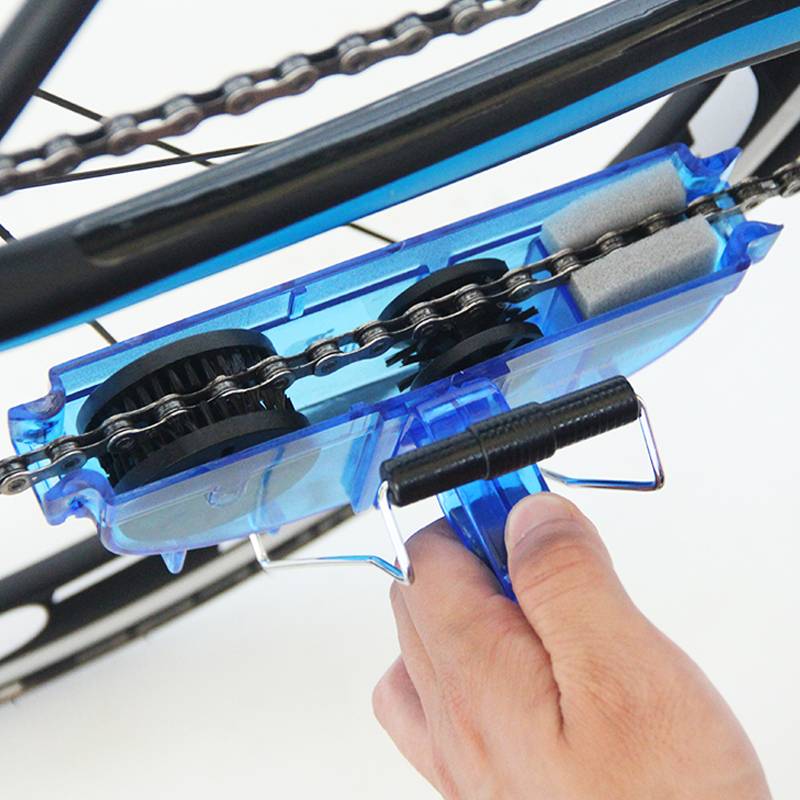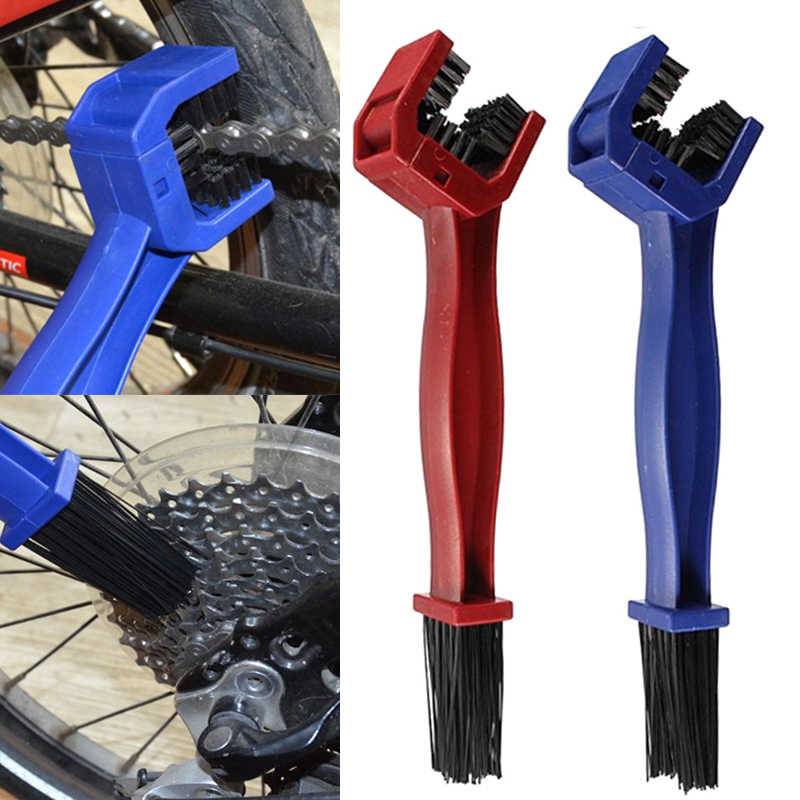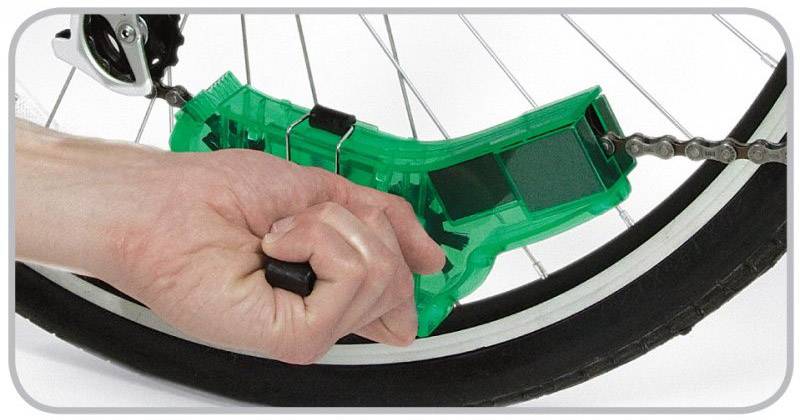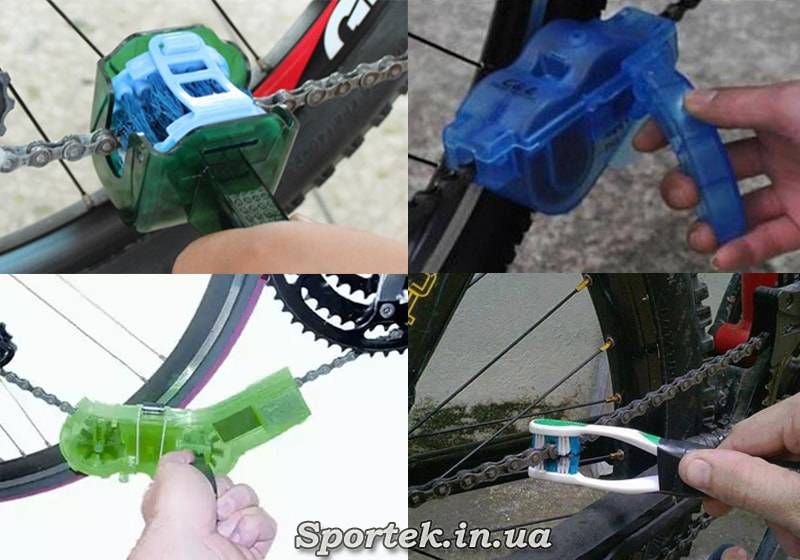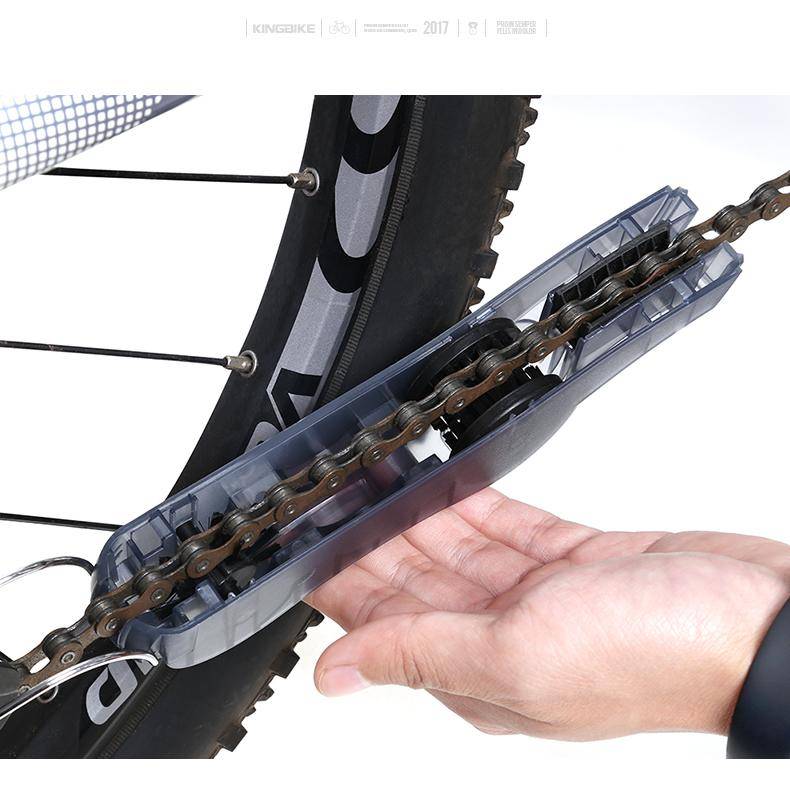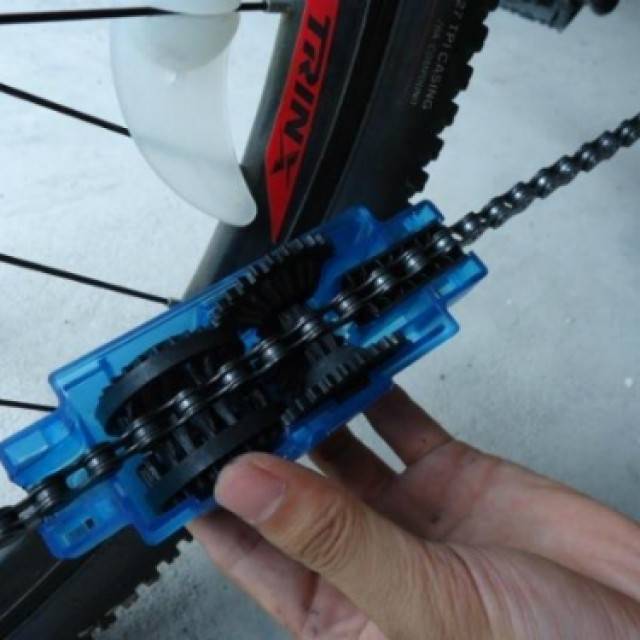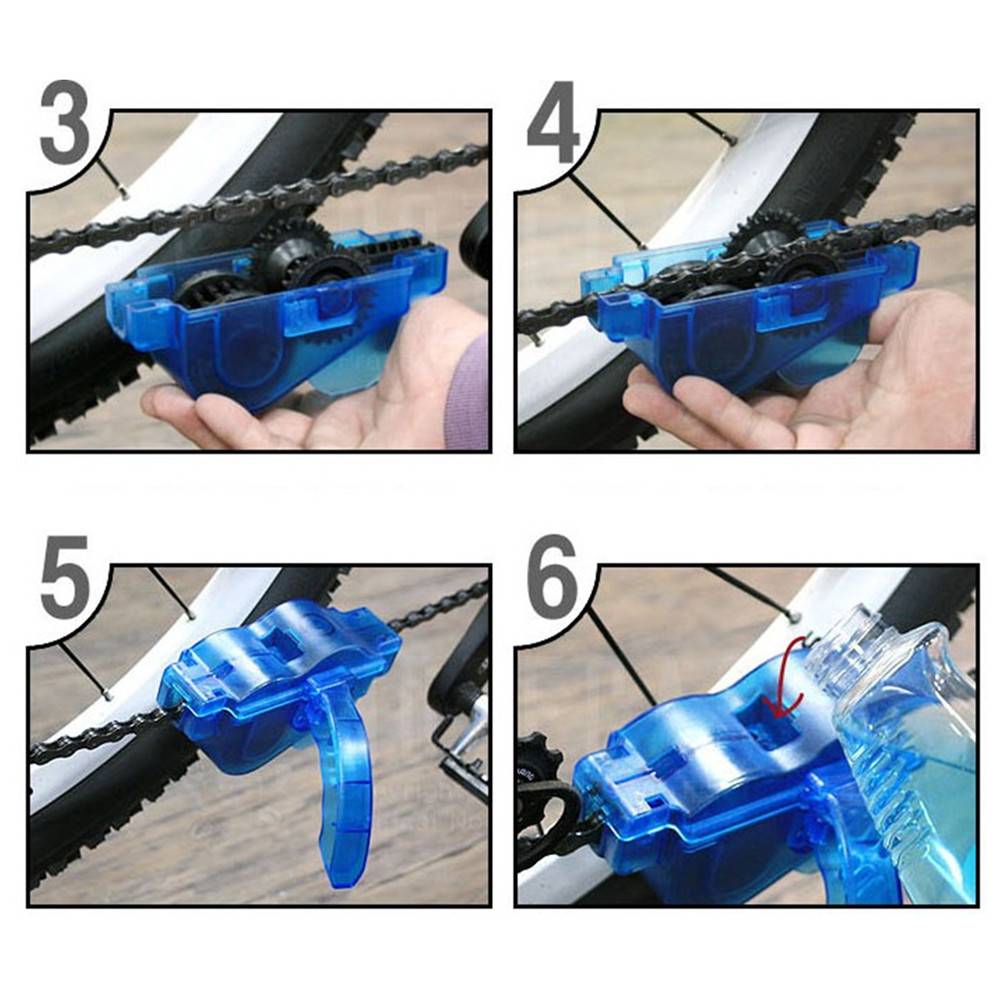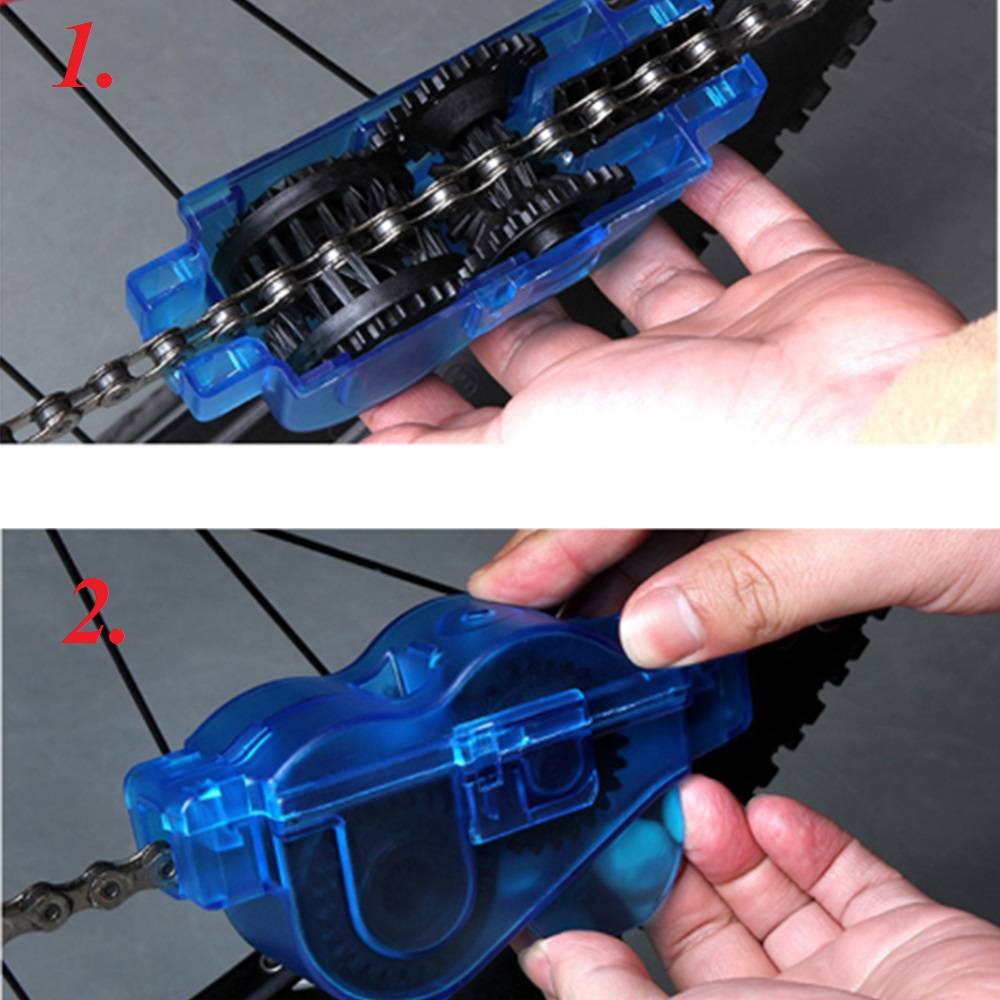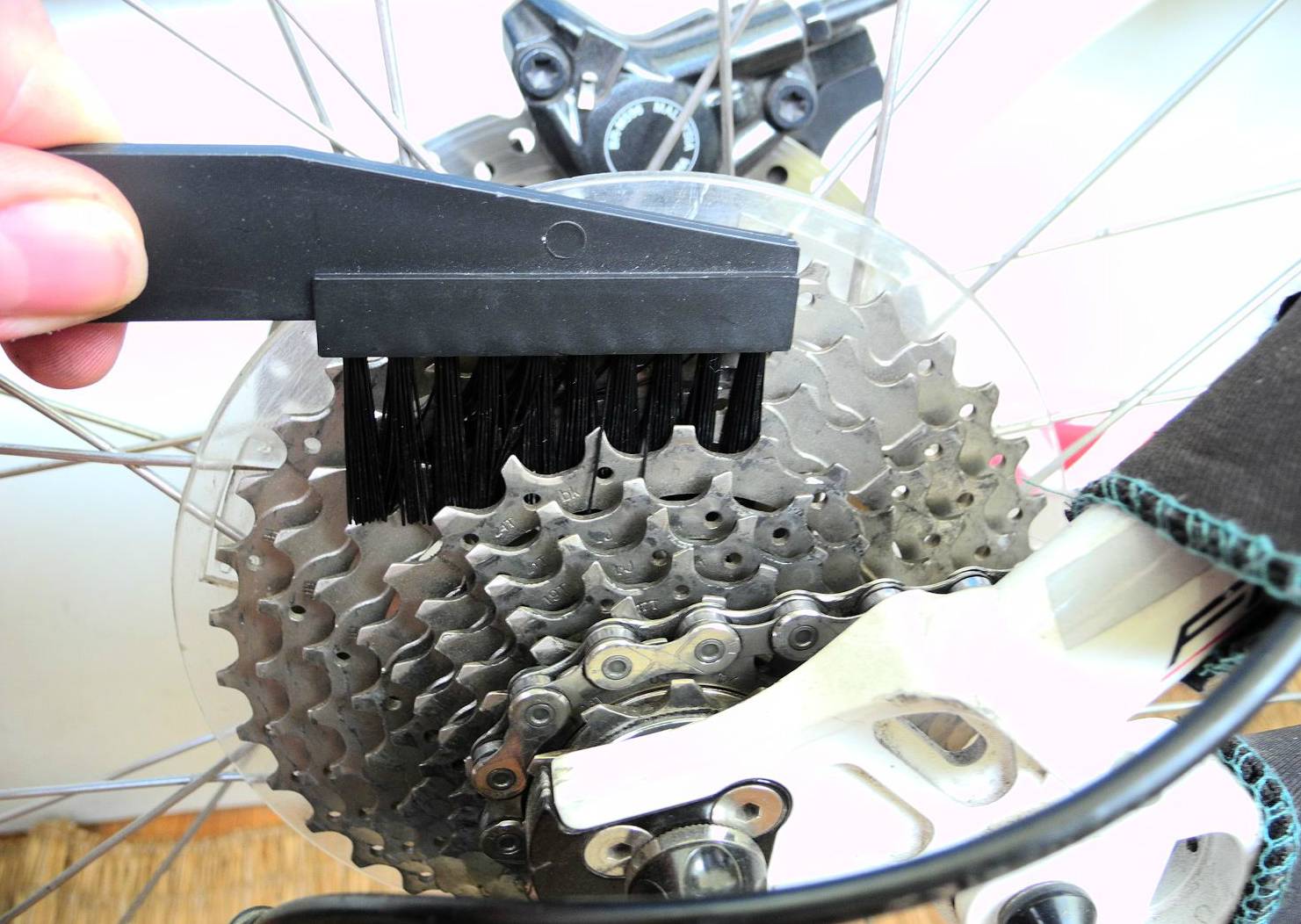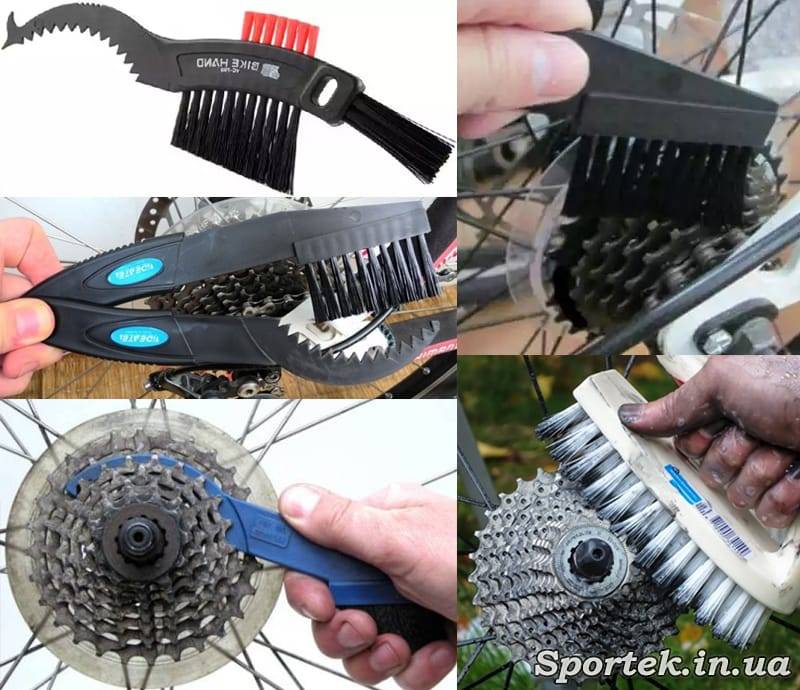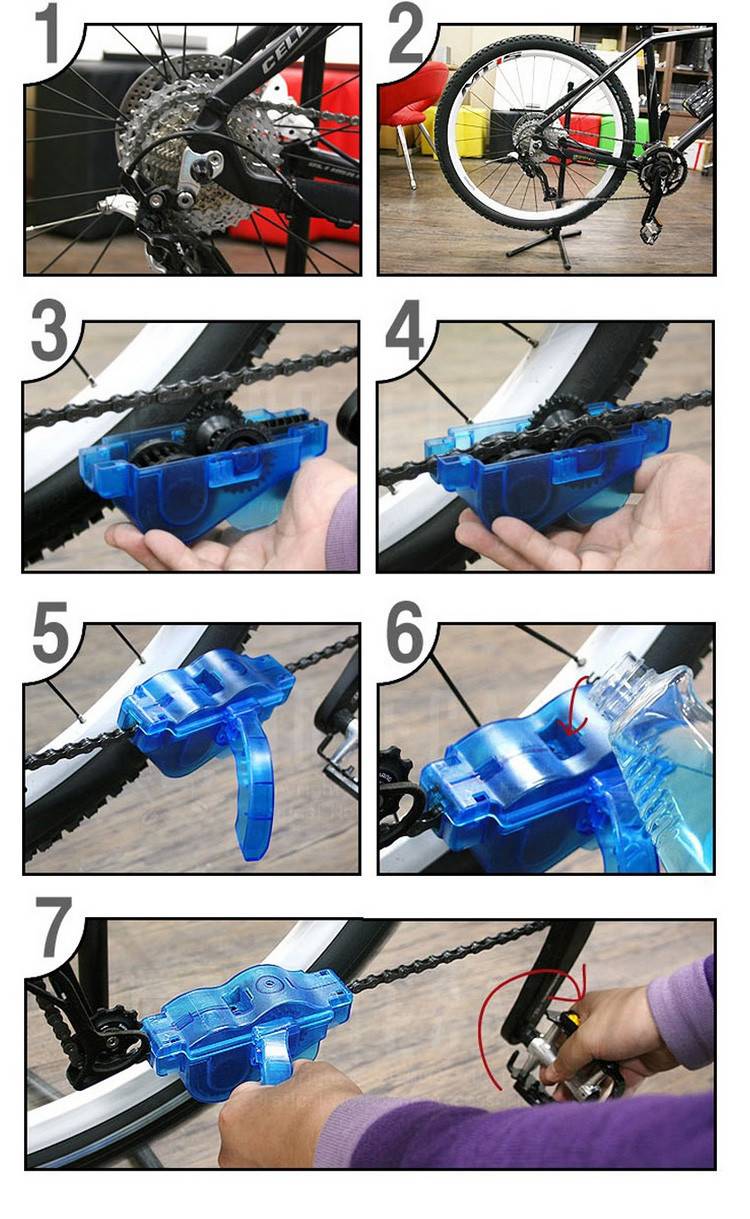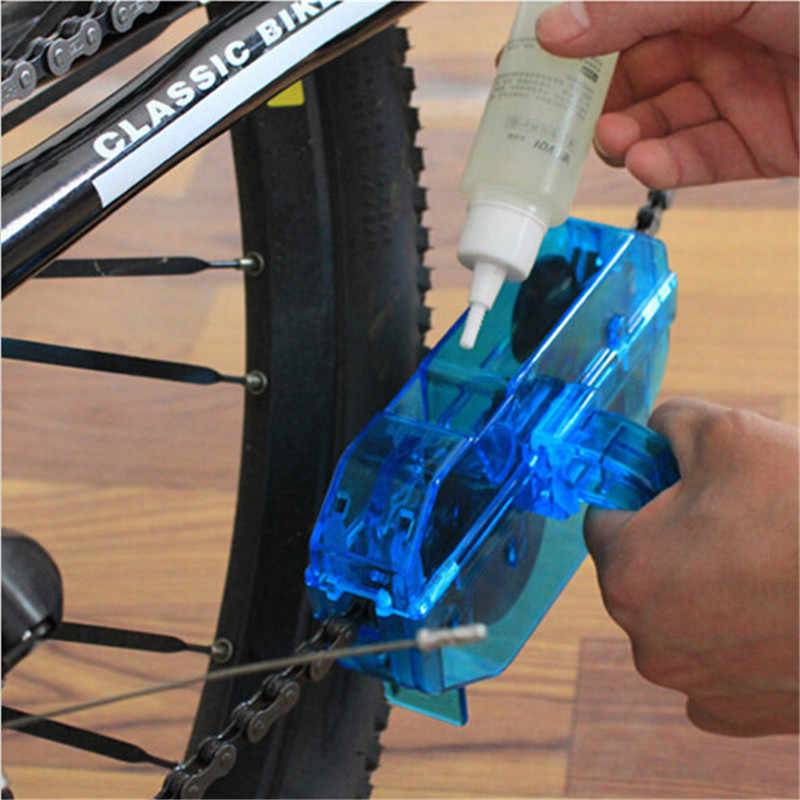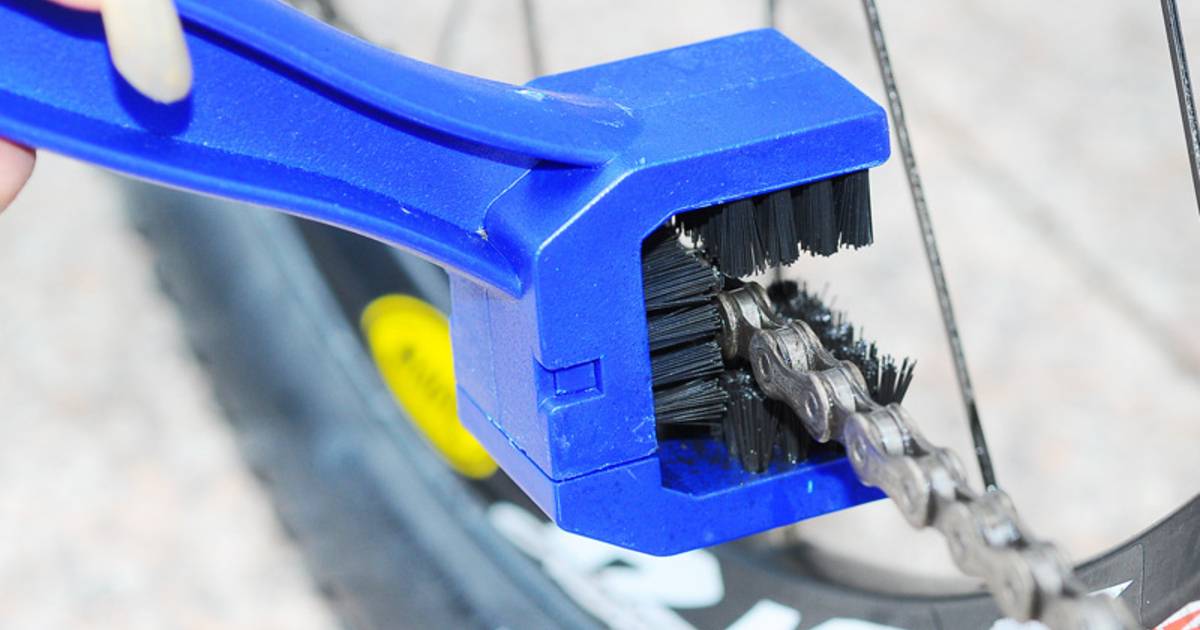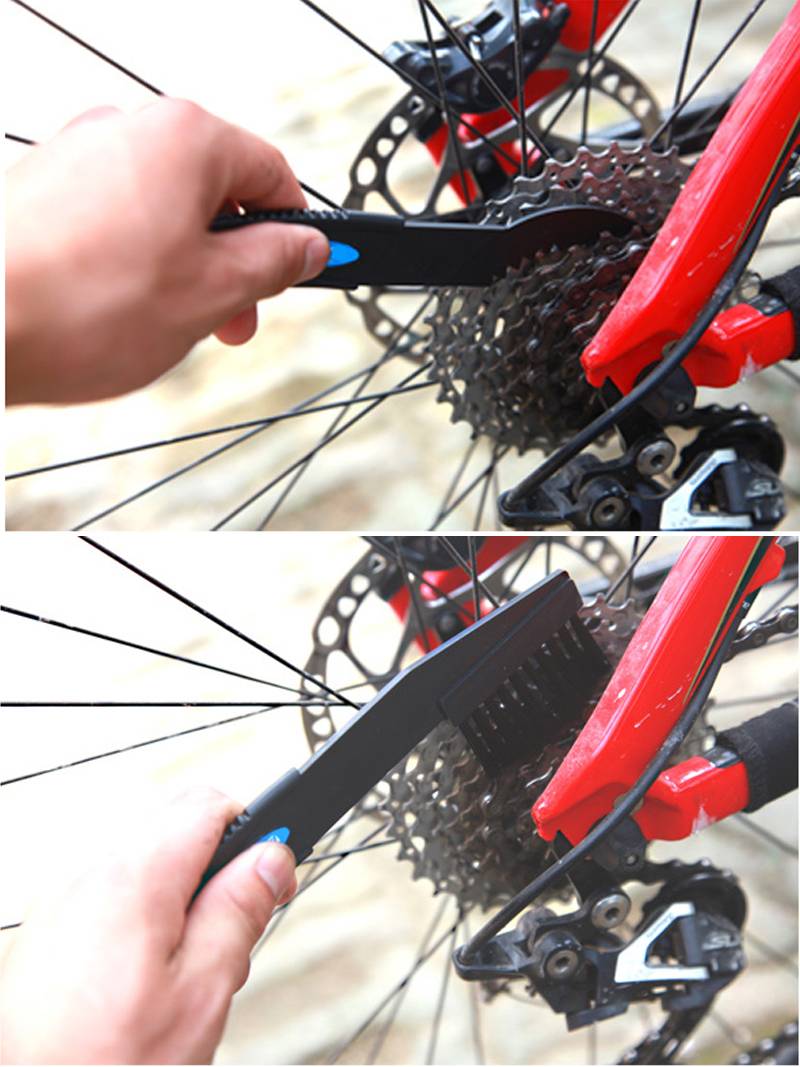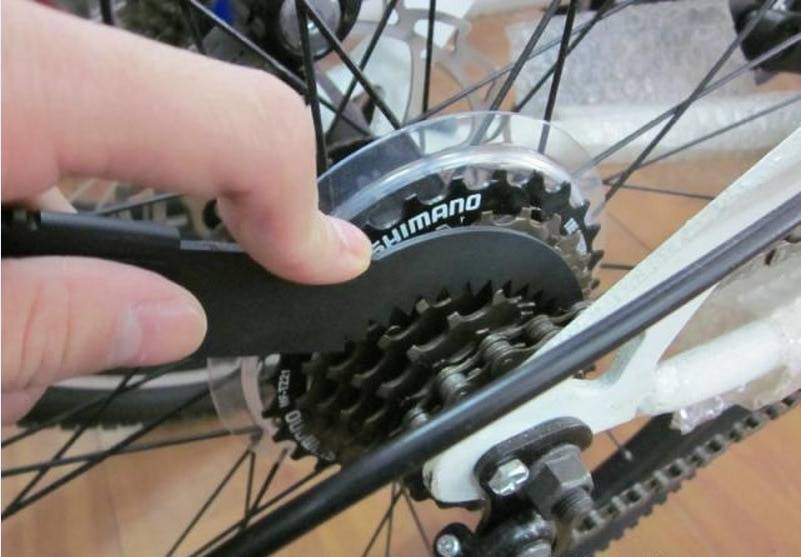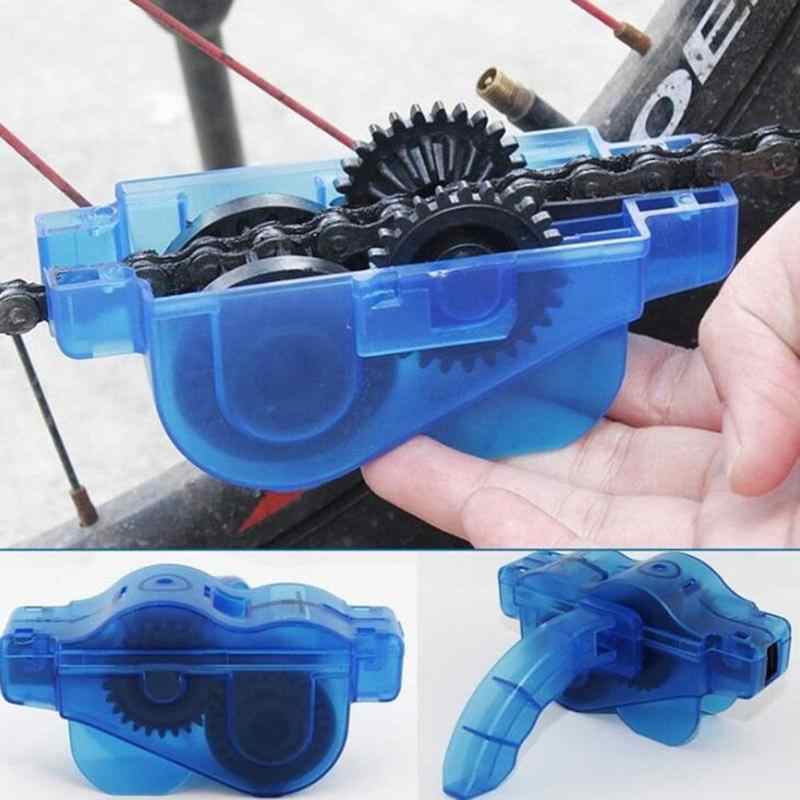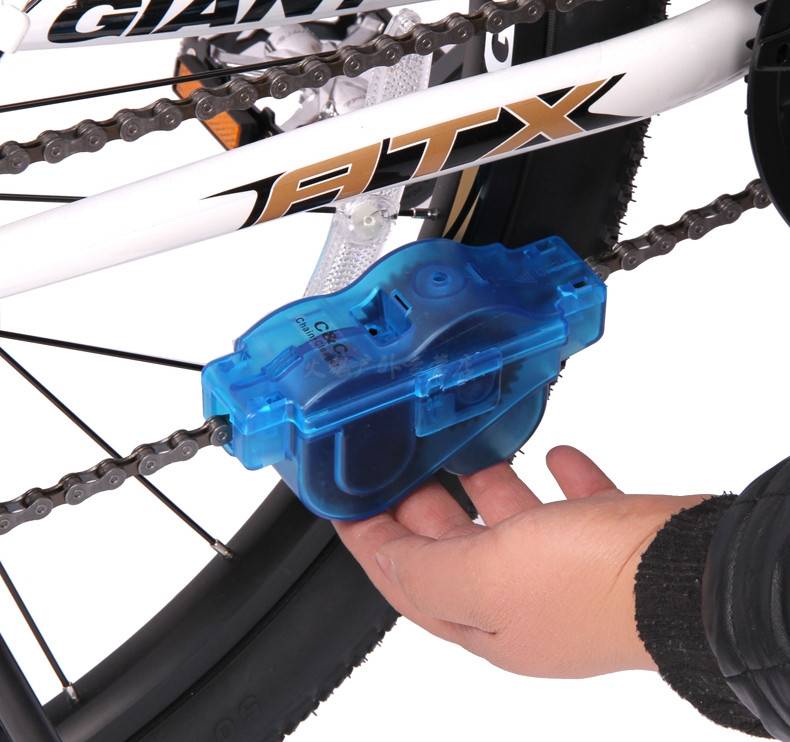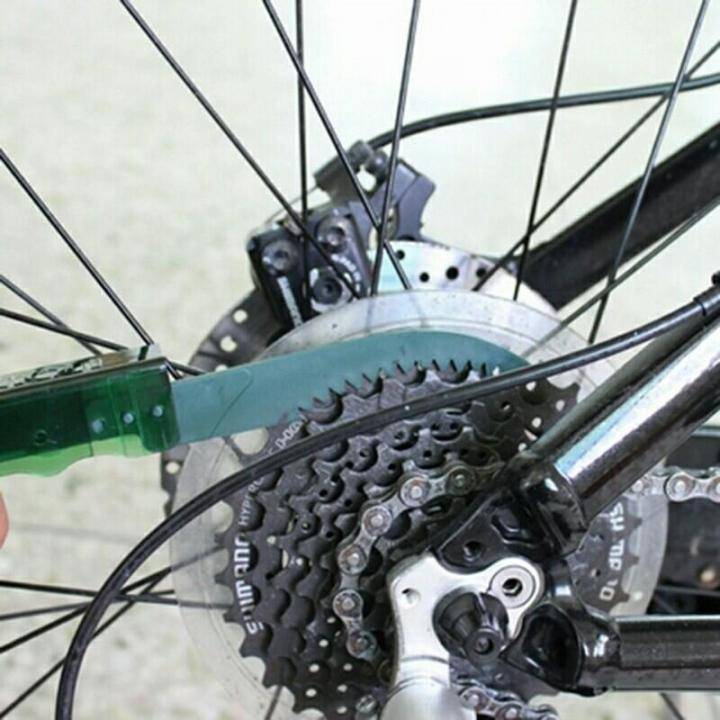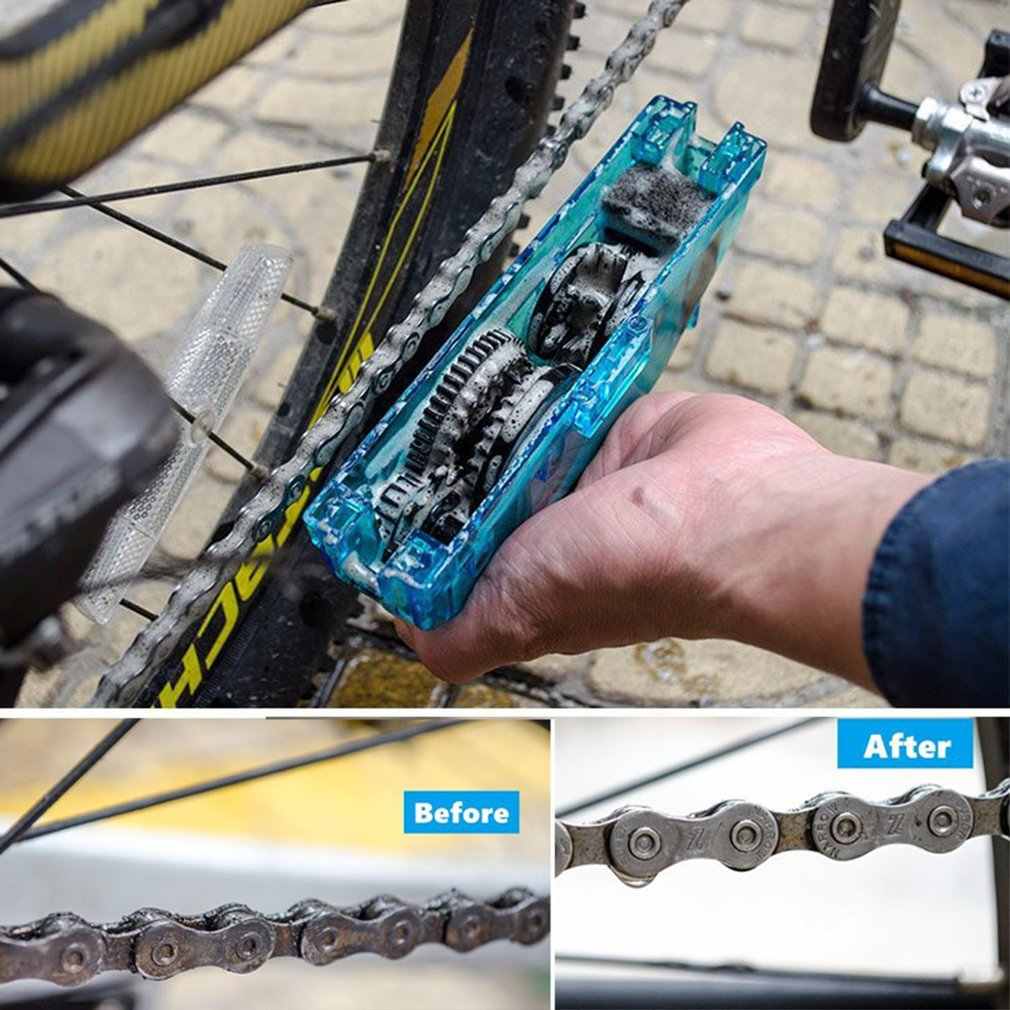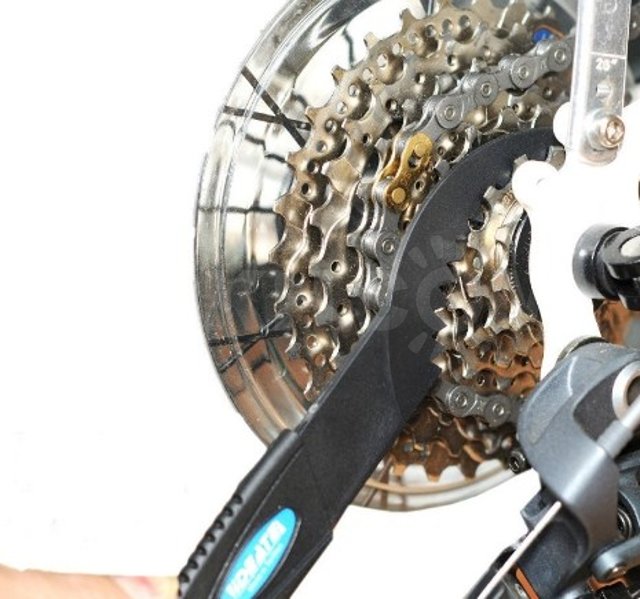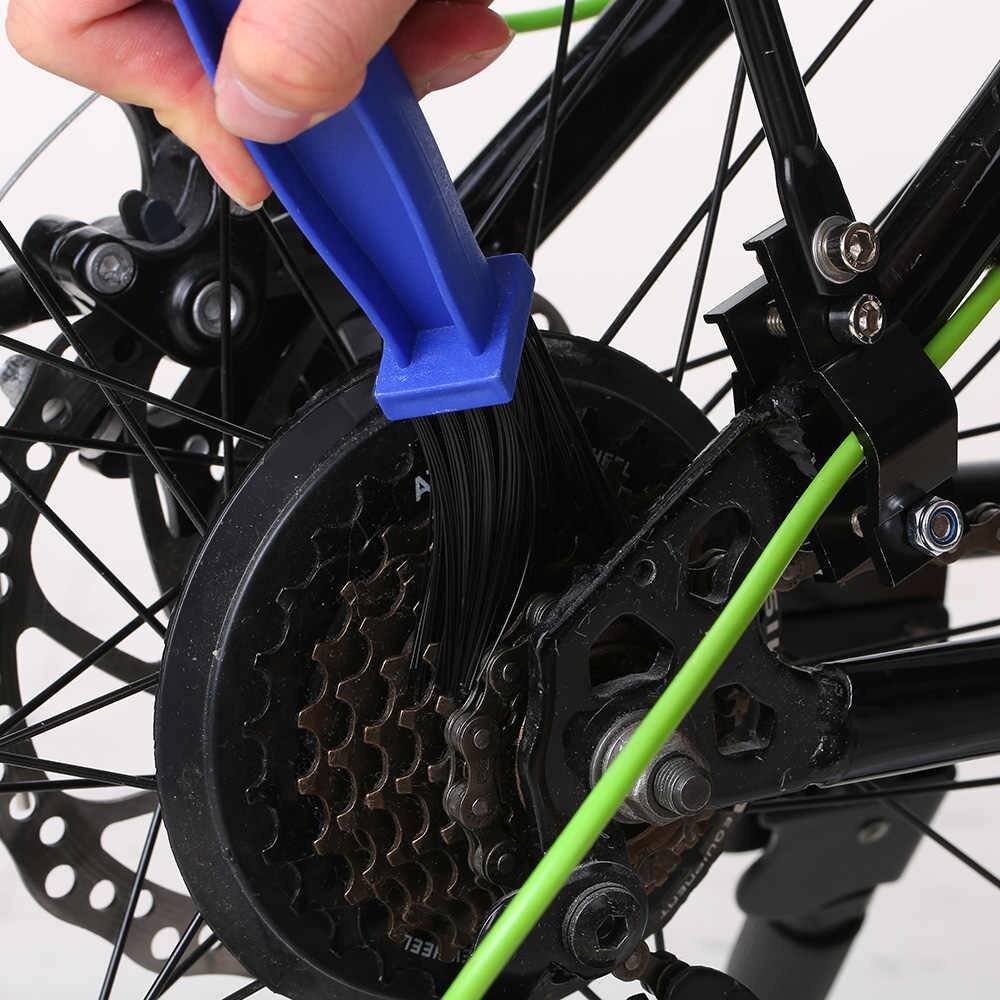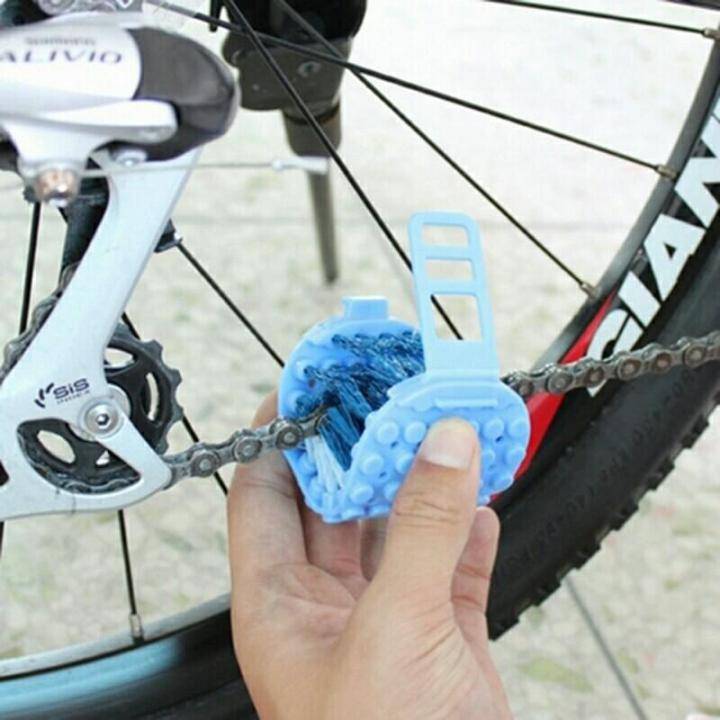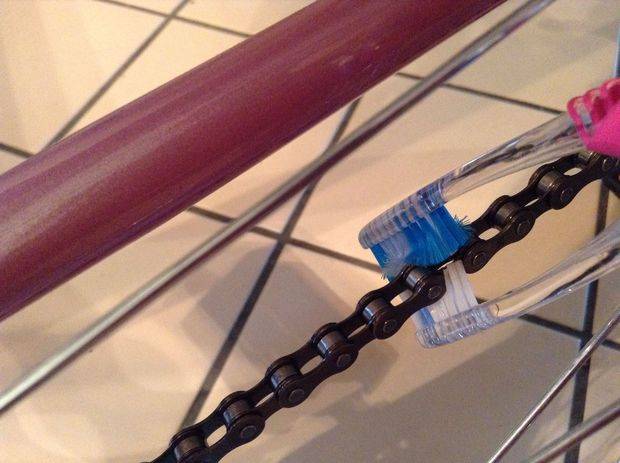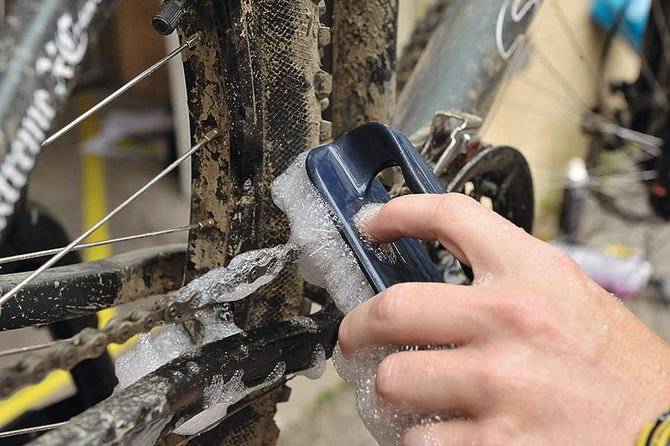Regular cleaning
Many bicycle owners are interested in how often to clean the chain. It all depends on the features of vehicle operation. People who regularly drive on dusty dirt roads will need to clean up quite often. These rides cause particles of dust, debris, sand and dirt to accumulate on the surface of the chain. They lead to a deterioration in the functioning of the links and to the appearance of a characteristic crackling sound. In this case, you will have to inspect and clean the part at least once a week.
Sometimes you have to drive on a muddy road after rain. After such trips, the chain becomes clogged with mud, which makes it almost impossible to pedal. After each such trip, you will have to remove the chain, clean it and lubricate it with oil.
Features of lubrication
After cleaning, the chain must be lubricated. This procedure is required after 100 km of run. Lubrication is needed if there are extraneous sounds. No sound is emitted from the lubricated chain. Over time, a slight rustling may appear, and then a crunch. Urgent lubrication is essential to prevent rust formation. Lubrication is performed after heavy rain, because it is washed off with water. The more often the service is performed, the longer the bike will last.
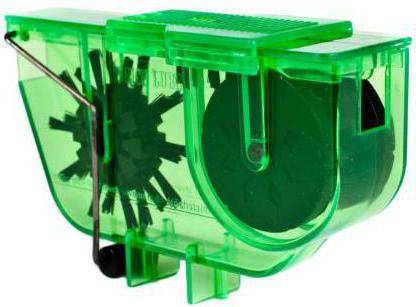
What is the best tool to use? The grease should be free of oils, as they have the property of picking up dirt and dust. These funds can be silicone, teflon, ceramic, paraffin. The following lubricants are sold in stores:
- Aerosol. Products are not good for lubrication because they must be used carefully so as not to get on the rest of the transport.
- Thick. With them, the lubrication procedure becomes more complicated. Processing must be carried out inside the rollers, and this is difficult to do with a thick mixture.
- Liquid. They are sold in tubes as well as in oil cans. The lubricant is excellent for the chain, it can handle even hard-to-reach places.
- Two-component. Includes grease and solvent. For high-quality processing, it is required to lubricate the roller so that the lubricant stays for a long time. It is this tool that allows you to process the inside of the roller.
The lubrication process is long and requires patience. You need to process each video separately. 1 drop will be enough. After that, you need to turn the pedals to separate the grease. Then the chain must be wiped dry. After that, she is ready to go.
All types of bike chain cleaning machines are special in their own way. To buy them or not, everyone decides for himself. If you want to carry out the cleaning procedure without unnecessary hassle, then such a device will be an excellent assistant.
When should you change your bike chain?
In addition to regular lubrication, caring for a bicycle chain also includes its timely replacement. During use, the bicycle chain will stretch a little, which contributes to the wear of the sprockets. Over time, you may be faced with the need to replace not only the chain, but also the stars on the rear cassette. To check if the chain is stretched or not on the bike, special meters can be purchased.
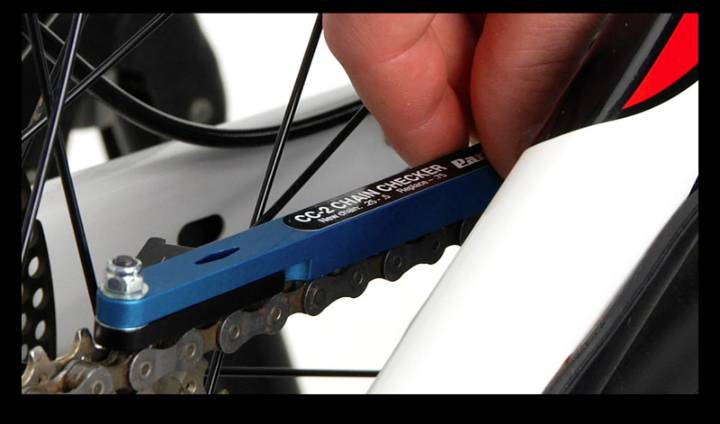
These devices are available for sale in two versions - simple and electronic. The first models will help determine if the chain can be used in the future or if it needs to be replaced. At the same time, electronic meters will allow you to find out the elongation of the link with maximum accuracy.
Take the test for knowledge of traffic rules for a cyclist!
Time limit:
of 15 tasks completed
Questions:
- 1
- 2
- 3
- 4
- 5
- 6
- 7
- 8
- 9
- 10
- 11
- 12
- 13
- 14
- 15
Information
To be able to get the rights, please click Next
You have already taken the test before. You cannot start it again.
The test is loading ...
You must login or register in order to start the test.
You must complete the following tests to start this one:
results
Correct answers: out of 15
Your time:
Time is over
You scored from points ()
| A place | Name | Recorded | Points | Result |
|---|---|---|---|---|
| The table is loading | ||||
| There is no data | ||||
Your result has been recorded on the leaderboard
Captcha:
- 1
- 2
- 3
- 4
- 5
- 6
- 7
- 8
- 9
- 10
- 11
- 12
- 13
- 14
- 15
-
With the answer
-
Marked as viewed
Advantages and features of using the machine
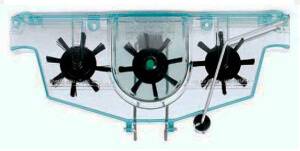
Bicycle chain cleaning and washing machine.
- We fill the plastic case with a special cleaning liquid.
- We attach the device to the bike chain.
- We spin the pedals.
- The gears begin to rotate, the brushes perform the cleaning function.
- During the washing period, it is recommended to change the detergent inside the housing at least 2 times.
Thus, the cleaning period takes much less time than if it is done manually. Plus, you don’t need to put in too much effort — all you have to do is install the device. Also, this option significantly saves money on detergents. Even if you are using some expensive option, here you will need very little of it, so the packaging will last for a significant period of time. This device is not only extremely simple in terms of operation, installation and design, but also its price pleasantly pleases the consumer. On average, it is about 300-500 rubles.
Notes (FAQ)
HOW TO CARRY OUT COSMETIC BIKE CARE (FRAME, SPECIAL PARTS).
I think you can wash it with a regular sponge and regular detergent. If there is a hose, it is more convenient to rinse the detergent out of the hose later. Storing your bike in a dirty state is strongly discouraged, especially if it gets wet or damp dirt remains on it.
DOES IT MAKE SENSE TO IMMEDIATELY FULLY FLUSH THE CIRCUIT WITH LUBRICANT? I myself think that the chain lubricant should be removed. If I'm not mistaken, a special storage lubricant is applied there. It is necessary to wash it off just because a lot of dirt will adhere to it.
WHICH LUBRICANTS ARE MORE EFFECTIVE FOR YOUR LOOK? I believe that you should use a specialized bicycle chain lubricant - appropriate for the weather conditions. (There are lubricants for dry weather, there are for wet ones, etc.) I like those lubricants that go directly into the pin. I don't like aerosols because the lubricant gets on other parts where it is not needed at all. Teflon greases (TF2 type) are good for constantly rubbing parts with little load or friction force - chain, stars. Weldtite lithium greases are good for bearings and internal working parts of the carriage assembly.
HOW TO REMOVE ADDED GREASE? You can use gasoline or acetone.
Lubricating the bike chain after cleaning
We recommend reading: How to lubricate a bicycle chain
It is impossible to take a cleaned bicycle chain and start using it right away. It requires compulsory lubrication. And this is also a process that requires certain knowledge. And specific formulations for lubrication. And they are different, so you have to choose.
Each of the possible bicycle chain lubricants has its own pros and cons (where can you go without them). And the cyclist, comparing the characteristics of the means, chooses the best for his "horse":
- Oils. They are all quite effective, the transmission mechanism with them works like a Bure watch. But their main drawback is stickiness. Immediately, all dust and any possible dirt will be on the freshly cleaned chain. That is, the cleaning process will be needed quite often.
- Teflon grease. An excellent option in all respects. In addition to the price - for many it will seem too high (no matter what company we are talking about, if the composition is really high-quality). Teflon grease, when placed on the bike chain, forms a thin protective film on its surface. This film is good because it is able to repel dirt and dust! Thus, the number of cleaning and lubrication of the chain will be reduced to a reasonable minimum, and the price of Teflon lubricant will no longer seem too expensive. In addition, the product is very economical - one standard bottle will last for a long time.
Teflon grease is available in all bike shops and specialist services.The best option you can choose is a spray. Then the consumption becomes very small.
Bicycle chain lubricants are also classified according to the conditions for the subsequent use of the vehicle. There is for "dry conditions", and there is for "wet". However, there are few cyclists who ride exclusively in the rain or, on the contrary, on dry land. So choosing a lubricant for the chain on this basis is only before a specific trip under certain conditions.
The rules for lubricating any bicycle chain are simple:
- the chain itself must be clean;
- good and well-selected lubricant;
- and the method of application "only in the right places" - on each roller from the inside;
- and do not overdo it with the remedy.
The method of applying any lubricant is drip or by spraying from a spray bottle. The latter is simpler and more efficient.
How to wash your bike
The easiest option: to wash with a hose (or at a car wash). But not everything can be washed off with just water (bicycle lubricant adheres well and dirt on it also adheres well). If the pressure of the jet is strong, make sure that no water gets into the bushings and the carriage. Another option - with a rag "the old fashioned way" ...
Bicycle washing can be divided into two types: “aesthetic” and “practical”. Aesthetic - beautiful appearance, but does not affect functionality. For example, you can wipe the frame with a cloth to make it shine. True, the bike will not go faster after that. “Practical” washing your bike without special tools is about cleaning the chain and what it comes into contact with: the sprockets at the front, the sprockets at the back, the rear derailleur rollers, and cleaning the rims.
STEP 1. Rear stars. This is how the stars look after 2-3 trips along the forest paths:
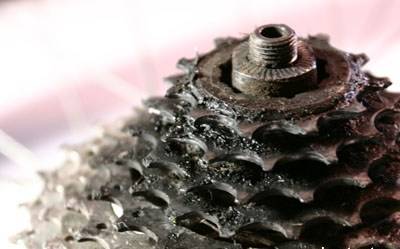
First you need to clean out the dirt between the stars. (You can use a rag or a stick of some kind):
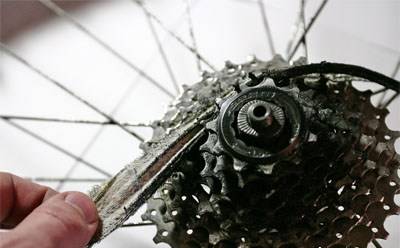
Now we clean the stars themselves. An old toothbrush can be used instead of a special brush for cleaning the cassette:
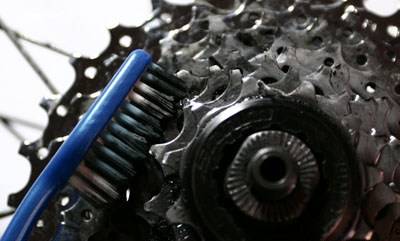
Something like this can be achieved without special tools:

STEP 2. Switch rollers.
A lot of dirt usually sticks to the rollers and it is not as noticeable as the dirt on the cassette stars. It is imperative to clean them - otherwise the dirt from them will creep into other components and all previous efforts are in vain. The dirtiest side of the roller is the one closest to the bike (right in the picture).
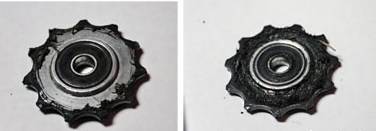
Due to the fact that the derailleur frame interferes, it is inconvenient to clean the rollers on the bike. It is necessary to strive for something like this:
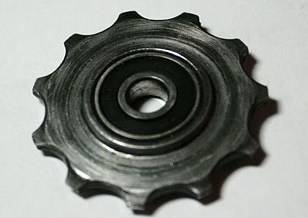
STEP 3. Stars in the front
They are also difficult to clean without removing. (Usually on budget bikes, they are not collapsible)
First of all, it is important to clean the areas with which the chain is in contact. When cleaning a large star, the chain must be transferred to small ones, when cleaning small ones - accordingly to a large one.
After cleaning:
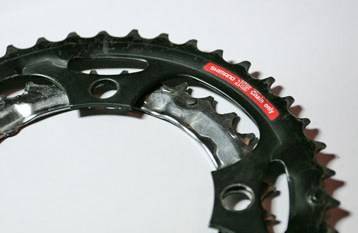
STEP 4. Chain
It is better to clean the chain after the stars so that it does not get dirty as you turn it. It is impossible to clean the chain well without special means. The outside can be cleaned with a cloth:
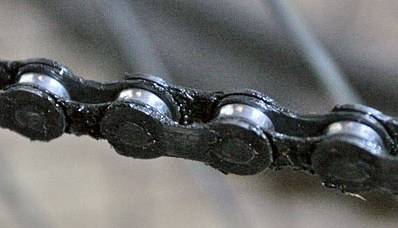
The inside can be cleaned either with a cloth (make a thin tip to crawl into the link) or with an old toothbrush:
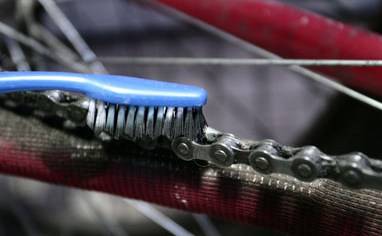
If you do not like this result, you will either have to try or buy a special machine for cleaning the chain. Another option is to remove the chain from the bike (preferably with a special lock) and wash it separately.
STEP 5. Lubricate the chain
After the chain is cleaned, it must be lubricated. The grease must get inside. The lubricant that is outside is superfluous. It must then be removed (so that it does not collect dirt).
STEP 6. Cleaning the rims
If you have vibrating racks, dirty rims can affect braking. Therefore, it is necessary to monitor their condition. Do not wash the rims with soap or other products after which the surface becomes slippery.
This completes the “practical” bike wash.

